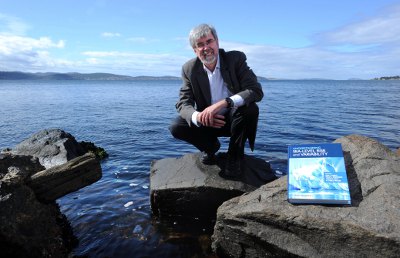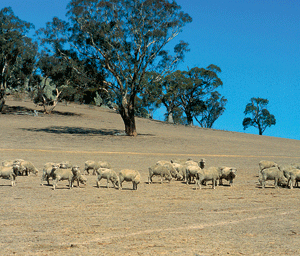
|
Published: 7 November 2011
Auditing the Earth’s sea-level rise and energy budgets
An international team of scientists has accounted for all contributions to global sea-level rise in a study that balances the sea-level rise ‘budget’ and explains the observed rise over recent decades.

|
|
John Church led an international study to balance the sea-level rise ‘budget’ and explain the observed rise over recent decades. Credit:
Chris Crerar, CSIRO
|
The research was led by Drs John Church and Neil White, CSIRO Wealth from Oceans Flagship scientists, and recently published in the American Geophysical Union’s Geophysical Research Letters.1
In the study, the researchers reviewed the related Earth’s energy budget, confirming that 90 per cent of the energy stored in the climate system resides in the ocean. This warming – in the form of thermal expansion – is a driver of sea-level rise.
The team found that thermal expansion and glacier melting have made the two largest single contributions to observed sea-level rise since 1972, accounting for 40 per cent and 35 per cent, respectively. The remaining 25 per cent is attributed to changes in the ice sheets and terrestrial storage in reservoirs and extraction of groundwater from aquifers.
The research findings resolve an issue evident in past International Panel on Climate Change (IPCC) Assessments in which observed sea-level rise has exceeded the sum of component contributions.
This disparity has raised concern that the IPCC may have underestimated future rises.
‘There are many factors contributing to sea-level rise, including changing groundwater storage, thermal expansion of the oceans, and melting glaciers and ice sheets,’ says Dr Church.
‘Closing the sea-level budget required accurate estimates of ocean warming, by far the largest storage of heat in the Earth’s climate system.
‘The sum of contributions has been less than the observed rise.
‘To resolve this, we revisited the Earth’s sea-level and energy budgets using new and updated estimates of all contributing factors for the past few decades, and including a new estimate of groundwater depletion.
‘This allowed us to balance the sea-level budget from 1972 to the present.’
He says sea-level rise and ocean warming have continued to increase up to the present time, in concert with increasing greenhouse gas concentrations.
However, aerosols have the potential to partially mask the effects on global temperature of balancing the Earth’s energy budget. From the research results, Dr Church’s team inferred an increase in aerosol emissions, probably from developing countries, and moderate volcanic activity.
The research team included scientists from the Antarctic Climate & Ecosystem CRC, Hobart, along with others from Canadian, US, Dutch and British research agencies.
Source: CSIRO
1 Church JA et al. (2011) Revisiting the Earth's sea-level and energy budgets from 1961 to 2008. Geophysical Research Letters, doi:10.1029/2011GL048794.



